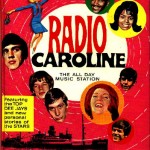 Sunday was the forty-sixth anniversary of Radio Caroline, one of the most famous UK pirate stations of the 1960s, and the inspiration for the recent movie Pirate Radio a/k/a The Boat That Rocked. Those radio pirates were inspired, in part, by the fact that the BBC played almost no rock music, and was also a monopoly, so there were no licensed privately owned stations to fill in this massive gap.
Sunday was the forty-sixth anniversary of Radio Caroline, one of the most famous UK pirate stations of the 1960s, and the inspiration for the recent movie Pirate Radio a/k/a The Boat That Rocked. Those radio pirates were inspired, in part, by the fact that the BBC played almost no rock music, and was also a monopoly, so there were no licensed privately owned stations to fill in this massive gap.
What many probably don’t realize is that pirate radio is still going strong in the UK, especially in big cities like London. Contemporary pirates are also inspired by the fact that the BBC still doesn’t play a lot of cutting edge popular music, which these days means electronic music and British forms of hip-hop. There are private commercial stations in the UK now, but nothing on the scale of what we have in the US. (And, one should note, American commercial radio doesn’t do such a hot job of playing cutting edge music, either.) So pirates in Britain’s big cities are the ones bringing the newest music to the airwaves.
VBS.TV just produced a very nice sixteen-minute documentary on the current London pirate scene, taking the viewer on top of the city’s apartment tower blocks which sprout pirate transmitters and aerials, and inside the studios of Flex FM. I was impressed to learn that the London pirates utilize what is known in the industry as a studio-to-transmitter link (STL) in order to keep their studios geographically separate from their transmitters. Host Matt Mason says they use an “infrared” transmitter as the audio connection, which is something I’ve never heard of, though audio relays that use infrared to exist. At Flex FM the broadcasters say they use an internet stream to send the signal from the studio. Given the expense of getting internet to the top of an tower block there must be an internet-to-infrared relay somewhere closer to the transmitter site.From a technical standpoint these London pirates are much more sophisticated than their American counterparts. Radio pirates tend to be much less prominent in most US cities outside of South Florida, and tend to be smaller operations where transmitters and studios are still co-sited. However, a few US unlicensed US broadcasters have made use of internet-based STLs to help them avoid capture by the FCC, often in a cat-and-mouse game.
The documentary also takes us back forty years to a less well known aspect of 60s pirate radio, visiting abandoned anti-aircraft forts in the sea that were taken over by pirate broadcasters. This documentary is fascinating and well worth your sixteen minutes.



